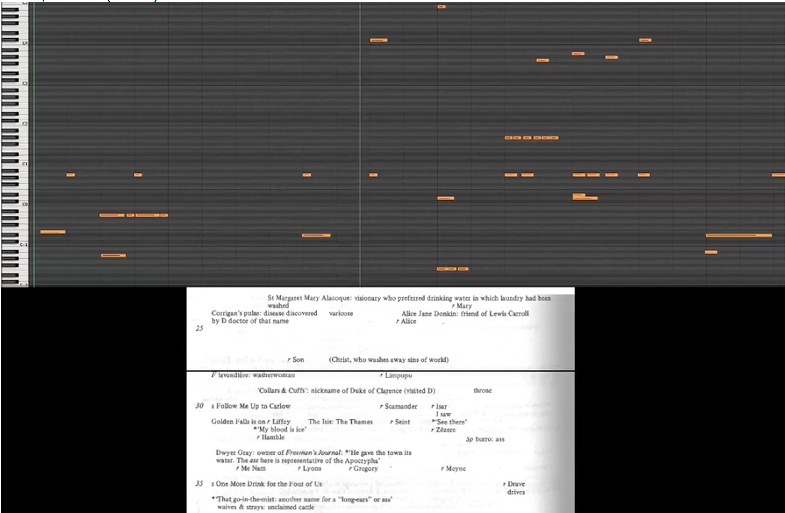Jail of Mountjoy
- Casey Michael Henry
Finnegans Wake is a text marked by music, yet this simple fact has long been obscured by the forbidding layering of Joyce’s prose. A book that should be appreciated for its lyrical assonance and rhythms has become a notorious symbol for impenetrability and displeasure. Anyone who has heard Joyce read the “Anna Livia Plurabelle” section can appreciate the Wake’s integral aural component. Anyone appreciating Joyce’s penchant for bawdy limericks and coarse double-entendre (such as naming a book of poetry, Chamber Music, after the “music” of a chamber pot) can understand his link to unconventional music.
Roland McHugh’s Annotations to Finnegans Wake suggests a structural relationship between Joyce’s musicality and referentiality through its spatial arrangement, such that each page resembles sheet music. My project, Jail of Mountjoy, takes this sonic understanding one step further by “playing” indicative sections of these annotations as music. This is accomplished by aligning different categories of reference to respective octaves–e.g. “Professional Jargon,” “Linguistic [Taxonomic],” “Linguistic [Categorical],” and so on. Then, sections are processed through a synthesizer to allow users to hear both the level of linguistic depth and type of reference indicated, while synchronized visual animations keep one situated in the text.
See the entire project here.
